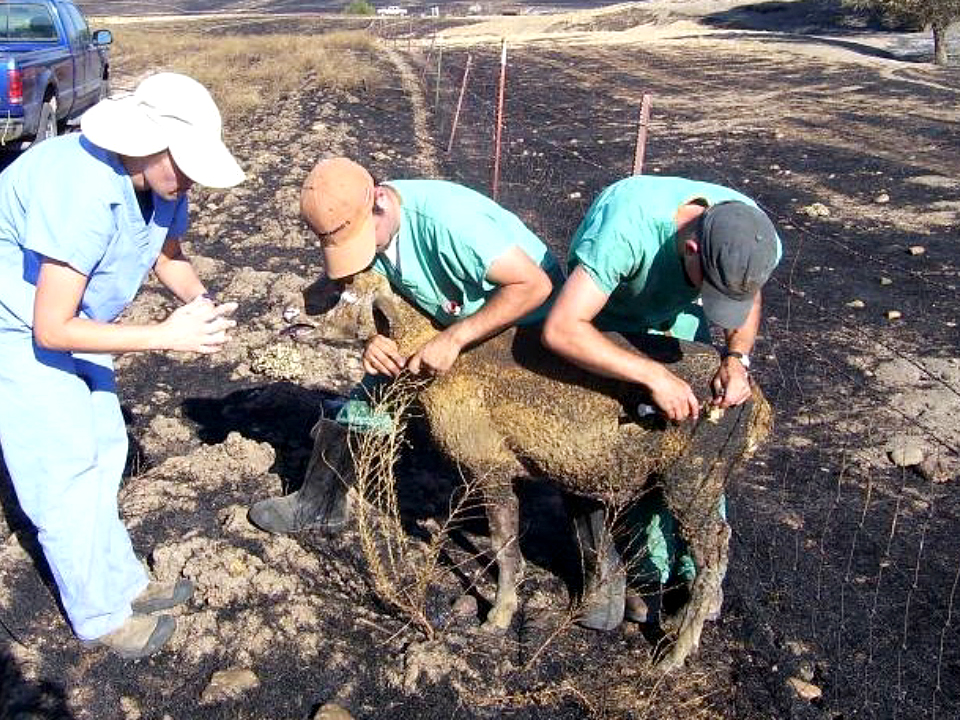 Livestock
Livestock
Disaster Preparedness Resources:
Wildfire Preparedness
- CalFire Wildfire Action Plan
- CalFire Fire Safety for Livestock and Pets
- CalFire Defensible Space Inspection
- Home Hardening and Defensible Space
- Grazing Livestock after a Fire
General Disaster Preparedness
- CDFA Livestock Disaster Preparedness
- FEMA Livestock Disaster Preparedness
- WIFSS Ranch Emergency Checklist
- WIFSS Disaster Preparedness Materials
Flooding Emergencies
Miscellaneous Emergencies
IAWTI activities include:
California has developed the largest agricultural economy in the United States, with the beef and dairy cattle industries significantly contributing to this global market. California leads the nation in milk production, with approximately 21% of the U.S. milk supply originating from California dairies. The California beef industry ranks fifth in the nation in the number of cattle and calves. The welfare of these animals is an increasingly important concern for the beef and dairy industries, consumers, and retailers.
Animal welfare is a complex topic that interfaces with both social and production aspects. Common concerns include legal, ethical and cultural considerations; health and behavior of the animals; economical constraints; and food safety risks. An acceptable level of welfare for livestock is not limited to one set of practices or one management system. Currently, animal care in commercial facilities is based on published data, scientific principles, practical experience, safety for the animals and employees, and economical considerations.
The welfare of agricultural animals will continue to be enhanced through objective research, effective education, and open communication with stakeholders. Sustained research is essential to providing additional information on the needs, production, and preferences of cattle under different management systems. As new and innovative scientifically based techniques are developed to enhance animal wellbeing, education and outreach programs are essential to communicate these advances to both industry and consumers.
The future of livestock welfare will be a composite of science, societal pressures, economic constraints, regulations, and possibly on-farm certification programs. These progressive issues will be best served with scientific advances, open communication, and educational outreach efforts available to all stakeholders and concerned individuals.

